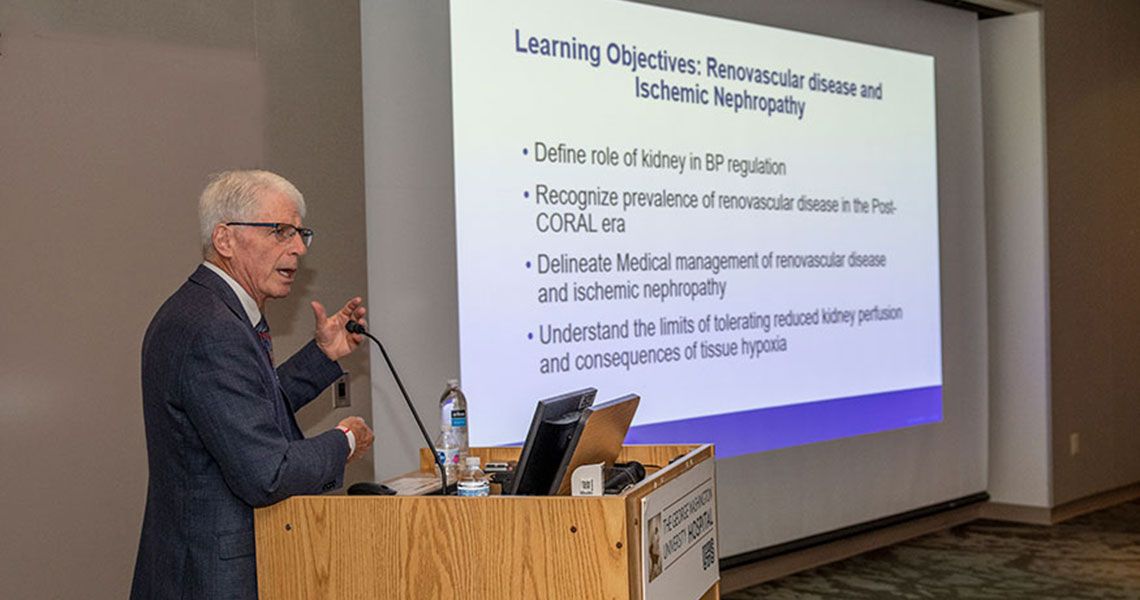In the early days of medicine, it was unclear whether hypertension was a condition that needed to be treated, or if, as many physicians believed, hypertension might actually be a positive condition. It wasn’t until the 1940s and 50s, according to Stephen Textor, MD, professor of medicine in the Division of Nephrology at the Mayo Clinic in Rochester, Minnesota, and this year’s annual Irene Tamagna Lecture on Hypertension, that medical professionals began to realize the risks posed by hypertension.
Following a brief introduction by Dominic Raj, MD, director of the Division of Renal Disease and Hypertension at the GW Medical Faculty Associates, Textor spoke to the audience, including members of the Tamagna family in attendance, about the new challenges managing renovascular hypertension and ischemic nephropathy.
The annual lecture, held this year on July 25, is named for Irene Tamagna, who began her career in Austria in the 1930s, but was forced to leave her home and abandon her studies to flee the Nazi occupation. She immigrated to Italy and completed another year of medical training, but again had to leave when the Pact of Steel between Germany and Italy was signed in 1939. Her next stop was the United States, where she had to learn a new language and begin her schooling again at the Women’s Medical College of Pennsylvania.
Despite all the obstacles she faced, Tamagna completed her medical training and joined the George Washington University (GW) faculty in 1948. In 2002, Tamagna and her family established the Irene Tamagna Lecture on Hypertension; Tamagna passed away in March 2018.
Textor noted at the start of his lecture that "because people are not dying as much of stroke and heart disease, [ischemic nephropathy] is getting more common, not less. We’re seeing more and more people living with significant vascular disease."
He said ischemic nephropathy, a long-term cause of hypertension and renal failure, is also a little more complicated than it was thought of in the past. “We talk about ischemic nephropathy and we fuss mainly about blocking the renal angiotensin system and considering revascularization — those are the first steps, no question — but realizing there’s a sequence of microvascular injury that occurs after is something we need to pay more attention to.”
When that happens, Textor said, small vessels begin to atrophy and drop out, there are oxidated stress injuries and mitochondrial damage that goes with it, and eventually cell inflammation.
But, he added, that knowledge also opens opportunities to address such issues. “I think we’ll begin to see studies to find out if we can protect the mitochondria over the long term. And in studies we’ve started we’re looking at if it is possible to rebuild some of the microvascular structures using angiogenic properties and cell-based therapies, or whether we can modify inflammatory response to help repair kidneys.
“So, actually, this is kind of an exciting time for vascular disease,” he said, “and I think you can make a case that it’s gotten more complicated and more interesting.”



